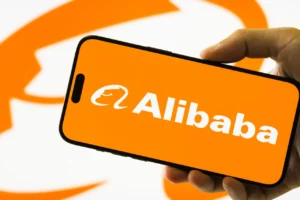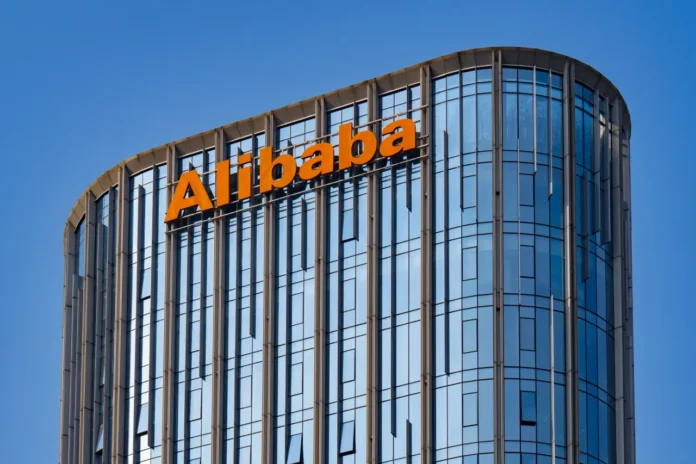What Happened And Why It Matters
On September 24, 2025, Alibaba lit a fire under its share price. The company said it will pour ¥380 billion (≈$53B) into AI infrastructure over the next three years, while rolling out global data-center expansion and a new flagship AI model. Investors didn’t hesitate: BABA jumped roughly 9% in the U.S. session, touching its highest level since 2021, with a similar pop in Hong Kong. The spark was Alibaba’s annual Apsara tech conference, where CEO Eddie Wu positioned AI as a core business priority alongside e-commerce. Reuters+2Investors.com+2
There are a few reasons this lands with real weight. First, the number is big even by Big Tech standards. Second, Alibaba paired the spending with tangible moves—a partnership with Nvidia, a slate of new overseas data centers (France, the Netherlands, Brazil, and more), and a model roadmap that aims straight at enterprise workloads. Third, it arrives as China’s platform economy steadies after a bruising regulatory cycle, which makes investors more willing to reward bold, executable plans. Reuters+1
Leaders, Quotes, and the Signal Behind the Headlines
Eddie Wu’s message was blunt: AI demand has outpaced expectations, and Alibaba will invest accordingly—even beyond the ¥380B plan if needed. That tone—urgent but confident—matched the rest of the showcase, where Alibaba aligned product, infrastructure, and partnerships into a single story: AI moves from side project to operating system for the entire business. Investors.com+1
On the market side, the moves drew a chorus of bullish takes. Bank of America and Barclays lifted their targets in recent weeks, arguing Alibaba is building a “full-stack AI services” position with real revenue levers in cloud. Meanwhile, Cathie Wood’s ARK Invest bought Alibaba for the first time since 2021, a symbolic vote that momentum has shifted. That buy appeared just as shares ripped, amplifying the “AI renaissance” narrative. Investors.com+2Crypto Briefing+2
The Bigger Trend: AI-First Cloud and a Trillion-Parameter Flex

Alibaba’s AI turn isn’t just slideware. At the event, the company introduced Qwen3-Max, its most powerful large language model yet, topping 1 trillion parameters. Alibaba says the model excels at code generation and autonomous-agent tasks—the kind of work that powers enterprise automation and developer tooling. It also teased Qwen3-Omni, a multimodal model aimed at VR/AR and smart-vehicle experiences—evidence the roadmap reaches beyond chat into spatial computing and embedded AI. Reuters+1
Under the hood, AI needs compute—and that explains Alibaba’s global data-center push plus its Nvidia collaboration. Access to advanced GPUs is the gating factor for training and serving frontier-class models. By adding facilities in Europe and Latin America and deepening ties with Nvidia, Alibaba is shoring up capacity for customers who want to build, fine-tune, and deploy AI at scale on Alibaba Cloud—at home and abroad. MarketWatch+1
The numbers back the pivot. In the June quarter, Alibaba’s cloud revenue rose 26% year over year to ¥33.4B, its fastest pace in years—an inflection many analysts link to AI workloads. That acceleration turned heads even when group revenue came in a touch light vs. consensus. In plain English: the parts of Alibaba most exposed to AI are already pulling more weight. Investing.com
What It Means for People, Customers, and the Ecosystem
For developers and startups, the headline is access: larger models, more GPUs, and more regions reduce friction for building AI products on Alibaba Cloud. For enterprises, the pitch is speed and scope—code copilots, autonomous agents that handle back-office tasks, vision + language systems for quality control, and edge deployments in cars, factories, and stores.
For consumers, the impact is quieter but real: smarter search and recommendations on Taobao/Tmall, quicker deliveries as logistics get algorithmic, and more responsive support bots. And for the global AI community, Alibaba’s moves increase competitive pressure on hyperscalers in cloud AI, which can lead to better pricing, faster model iteration, and more choice across regions.
Financially, there’s a trade-off. Heavy capex and R&D can pressure margins in the near term, but they also build a moat—especially in regions where cloud share is still fluid. That’s precisely why markets rewarded the plan: investors see a path where cloud + AI diversify growth beyond core commerce, and where scale compounds advantage. Investors.com
Personal Analysis: Here’s What This Really Means
When you step back, it feels like Alibaba just chose its next decade. The company is no longer pitching AI as a feature—it’s treating AI as the operating layer for commerce, cloud, logistics, media, and payments. I remember when “cloud” was the optional add-on; today, it’s the business engine. AI will replay that curve, only faster.
What stands out is execution risk vs. reward. Building a trillion-parameter model is a flex; folding that capability into products people actually use is the win. The Nvidia tie-up and region build-outs tell me Alibaba understands the bottleneck (compute + distribution) and is attacking it head-on. The open question is geopolitical: chip export rules can shift, and multinational clients in Europe may scrutinize data governance. Those are solvable, but they’re real.
If you’re a founder or product lead, the takeaway is simple: plan for AI-native products, not “AI-enhanced” ones. If you’re an enterprise buyer, the homework is comparing total cost of AI ownership—model quality, GPU access, region fit, and contract flexibility—across Alibaba, Amazon, Microsoft, and others. And if you’re a casual investor, the story isn’t only about one pop; it’s about whether cloud AI keeps compounding in the numbers. So far, it’s pointing in that direction. Investing.com
FAQs
Why did Alibaba’s stock jump so sharply?
Because the company paired a $53B AI plan with concrete steps—Nvidia partnership, global data centers, and new flagship models—which boosted confidence that growth can re-accelerate. Investors.com+1
What’s special about Qwen3-Max?
It’s Alibaba’s largest model yet—over 1 trillion parameters—and it targets code generation and autonomous-agent use cases that enterprises value. Reuters
Is cloud really improving?
Yes. In the June quarter, cloud revenue grew 26% YoY to ¥33.4B, the best in years—momentum many tie to AI demand. Investing.com
Did anyone high-profile buy the stock?
Cathie Wood’s ARK reopened a position in Alibaba—the first since 2021—adding to the “AI comeback” narrative. MarketWatch+1
Conclusion The Takeaway for Readers
Alibaba’s $53B AI sprint is more than a headline; it’s a map of where the company—and arguably the industry—is going. With compute access, model heft, and global reach, Alibaba is shifting from e-commerce icon to AI-first infrastructure + applications company. That could mean faster products for users, new AI tools for businesses, and a stronger, steadier cloud growth engine for shareholders. If the company keeps converting tech milestones into customer wins, this rally has room to run—though it will navigate chip politics and tough global competition along the way. Investors.com+1
Disclaimer: This article is based on publicly available information from reliable sources

